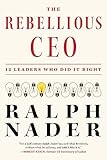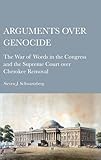The first of three presidential debates, Wednesday evening, focused on domestic policy. There were supposed to be six segments of 15 minutes each. Moderator Jim Lehrer, executive editor and anchor of the nightly PBS NewsHour, was supposed to have asked one question in each segment; each candidate had two minutes to respond. The rest of the time in the 15 minute segment was supposed to be for “discussion”.
However, Lehrer, who had moderated 12 previous debates, didn’t control the candidates or the debate; the time limits were shattered on the first question. What passed as debate was nothing more than a series of carefully-rehearsed, often rambling, mini-speeches that talked more in generalities than in specifics. Each candidate, an experienced debater and strong orator, threw out several points at once, hoping a few would stick; the other just responded by a counter-speech, most of which didn’t address the points at all. They talked over one another, and both talked over the moderator. Even more important, numerous critical domestic issues were never discussed.
Even the most pro-Obama supporter would have to acknowledge that Gov. Mitt Romney had exceeded expectations and was able to dominate the President, who was not as sharp as he needed to be. Romney was strong and skillful, perhaps surprising even his own campaign staff; Barack Obama’s closing two-minute speech was, at best, lame and not indicative of either his presidency or his oratorical ability. This was not a time for the professorial “No Drama Obama” personality to dominate. Indeed, this debate was nothing like the much-remembered Lincoln–Douglas debates of 1858 or even the quality of the average debate by college teams in hundreds of tournaments each year.
The third presidential debate, October 22, will focus upon foreign policy. The format is the same.
In between will be a town meeting debate, October 16. Non-committed citizens, chosen from a Gallup poll, will ask questions. A candidate has two minutes to answer the question; the other candidate has two minutes to respond.
The vice-presidential debate is October 11, with nine segments of 10 minutes each.
Eight TV and cable networks are carrying the debates live; in the relatively new world of social media, the debates are also live streamed, with millions of opinions and updates on Facebook and Twitter.
The Democratic and Republican teams argue for months about format and direction. In two of the three debates they know the topics well ahead of time. For the third, the “town meeting” debate, they can pretty much guess what the questions will be. Each campaign staff has been preparing for weeks to answer and spin the prepared questions. As a result, what passes as debates is little more than rehearsed political monologues between nominees for two political parties.
There is no reason why only Democratic and Republican nominees are allowed to debate. This essentially reaffirms the belief that the U.S. has a two-party system, approved by the mass media, and leaves out significant candidates whose ideas and opinions need to be heard. While a debate with more than a hundred declared candidates is unreasonable, it isn’t unreasonable for the debates to include Libertarian party candidate Gov. Gary Johnson and Green Party candidate Dr. Jill Stein. Both are on the ballots of most states. Both have good views that should be heard. And, both are the only minority party candidates who can get the 270 electoral votes for elections. Rocky Anderson, whose views are important enough to be heard on a national stage, isn’t on enough state ballots to be mathematically eligible to receive a majority of the electoral college.
The first televised debate was in September 1960 between Vice-President Richard M. Nixon and Sen. John F. Kennedy. Independent polls, and those who only heard the debate on radio, had suggested that Nixon was the winner, but those who watched it on television overwhelming believed it was Kennedy. Nixon, underweight because of an extended hospital stay, appeared sickly; he refused makeup to cover a 5 o’clock shadow. Kennedy, however, was tan, handsome, and charming. Two more televised debates followed, but it was the first one that mattered. From then on, candidates knew that image mattered over substance.
In 1980, Ronald Reagan scored points with a famous, “There you go, again” zinger casually tossed at President Jimmy Carter. In 2000, Al Gore, who appeared to be defeating George W. Bush, lost any advantage when the TV cameras, and subsequent clips, showed Gore sighing over and over.
Nevertheless, no matter how much we wish to believe that debates matter, numerous polls over the past five decades have shown that voters pretty much have their minds already made up, and the debates serve only to reinforce voter intent. As far as the facts? Moderators don’t challenge the nominees, and if the opponent is too busy preparing his next statement and doesn’t immediately respond, the facts are little more than the first casualty of this war of words.
Certainly, with a campaign buy of more than one billion dollars just in TV advertising, the voters have already been subjected to enough of what PR people call “messaging.” The debates are just more of that packaged and sanitized “messaging.










